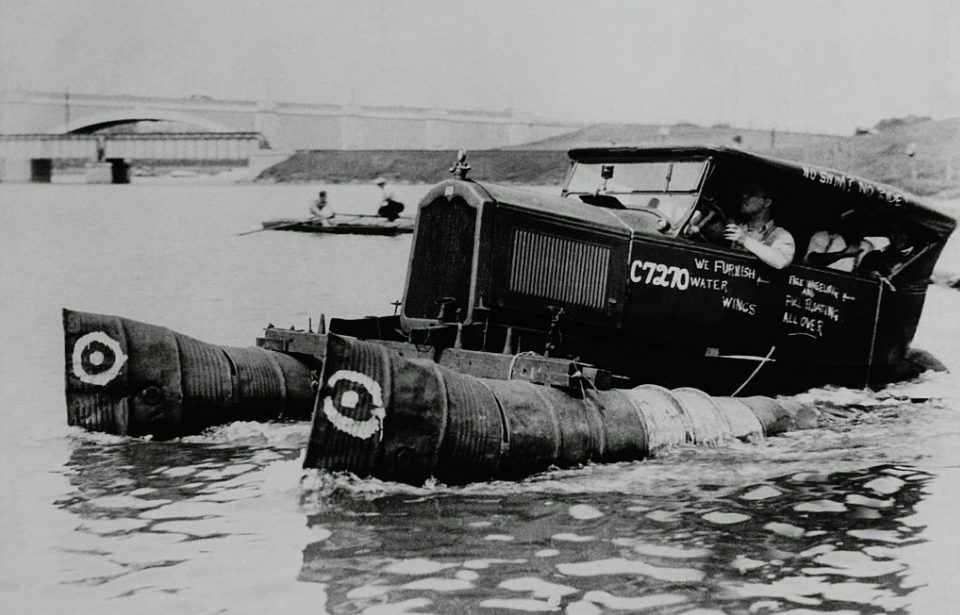“If God had intended us to fly, he would never have given us the railroads,” said Michael Flanders, one half of Flanders and Swann. Mel Brooks had a different take on the matter: “If God wanted us to fly, He would have given us tickets.”
Mankind has always been fascinated by getting somewhere faster or in more comfort. A variety of inventions have been dreamed up to achieve this. Some, like airplanes, trains, bicycles, and cars, have proved both popular and practical. However, some ideas didn’t quite get off the ground – both metaphorically and literally.
Let’s take a look at some of the weirdest transportation ideas in history.
Ornithopter
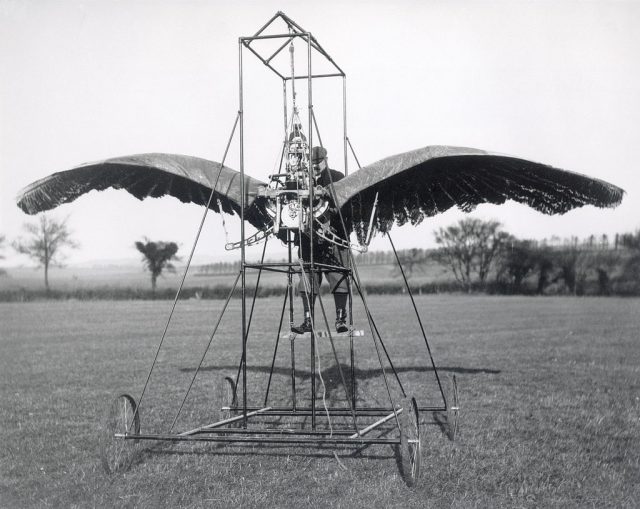
The ornithopter is humanity’s literal interpretation of the saying: “If God wanted us to fly, he would have given us wings.” It is an aircraft that flies by flapping its wings, powered either by an engine or a pilot’s arm or leg muscles.
Smaller remote-controlled versions have been used quite successfully. For example, Colorado Parks and Wildlife created an artificial hawk that, when in the air, encouraged the endangered Gunnison sage grouse to remain on the ground so they could be studied. Since ornithopters can be made to look like a bird, bat, or insect, ornithopters have also been used by the military for aerial surveillance.
In 1929, Alexander Lippisch flew around 250-300 meters (800-1,000 feet) in an ornithopter he’d built. However, because he used a tow launch, some people argued that the aircraft was merely gliding to a stop after its assisted start.
A more recent attempt was in 2010 when an ornithopter named Snowbird flew for almost 20 seconds across a distance of 145 meters (476 feet). Improved data collection verified that this had been a self-powered flight, not just an extended glide.
Amphibocycle
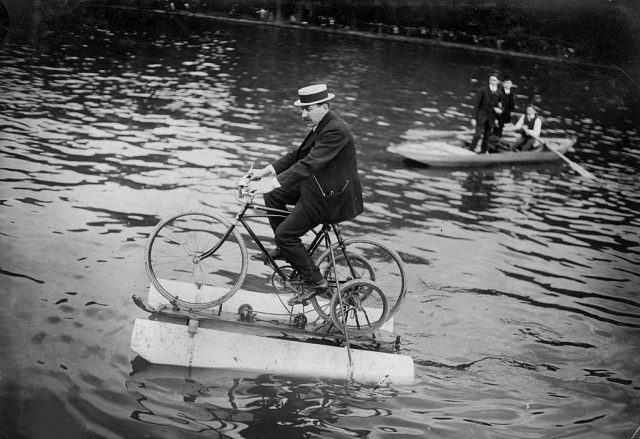
An amphibious bicycle is one that can be used both on land and in water. The general idea is that both wheels and floats of some description must be incorporated into the design, but the appearances of such vehicles vary widely.
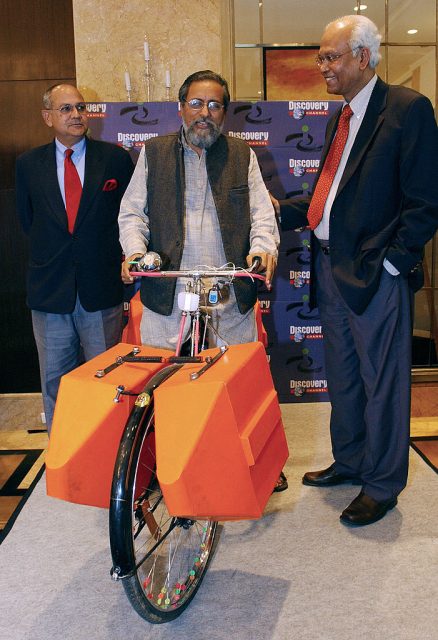
Mohammed Saidullah (not pictured here) lives in the Motihari district in Bihar, an area prone to flooding. During a three-week flood in 1974, Saldullah needed to cross a river to reach a town for provisions. Since he used a boat for the river and a bike once he was in town, he theorized that a great invention would be a bike that he could ride through the town and across the river. By adding four rectangular floats for buoyancy and fan blades to the spokes, the “Noor bicycle” (named after his wife) was born.
Of course, you then get some people who take it even further by creating an amphibious scooter.
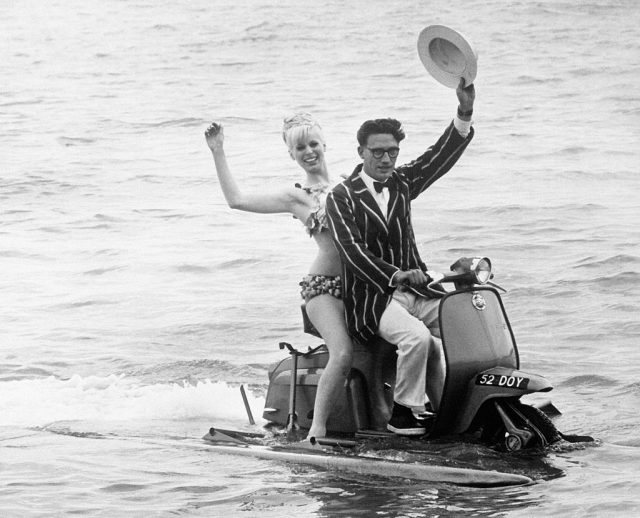
A family bicycle – with a sewing machine
Of course, sometimes what you want is not a bike that can go to fancy places, but one that can accommodate more than one person.
If there are just two of you, then it’s no problem. Tandems have always been popular.
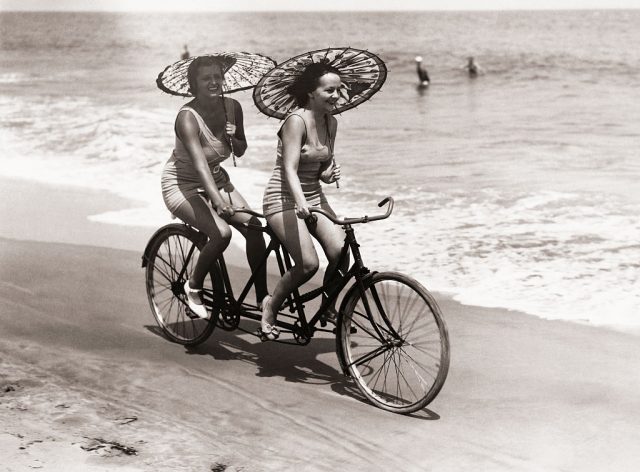
But what if you want to take your friends or family with you? There’s the traditional way of buying individual bikes or balancing people on the handlebars. But if you can all pedal equally well, then there are some bicycles out there built for four:
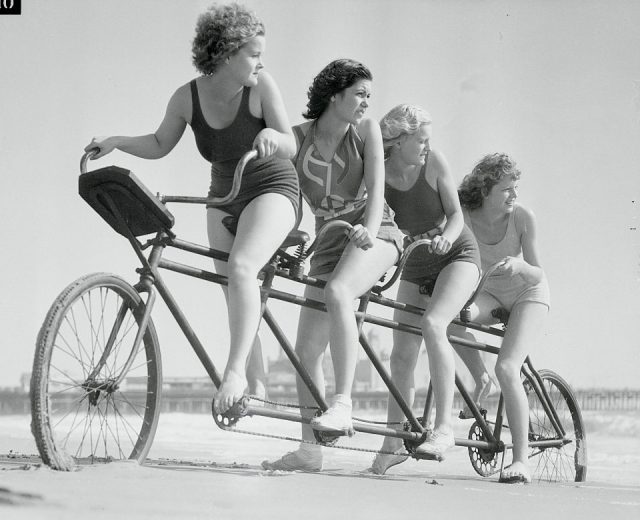
But for Charles Steinlauf, that wasn’t quite good enough. So he invented this four-person bike. Charles is seated at the top, steering and sharing pedaling duties with his son at the rear. His daughter sits at the front while his wife operates her sewing machine in the middle – because what point is a bike if you can’t sew at the same time?
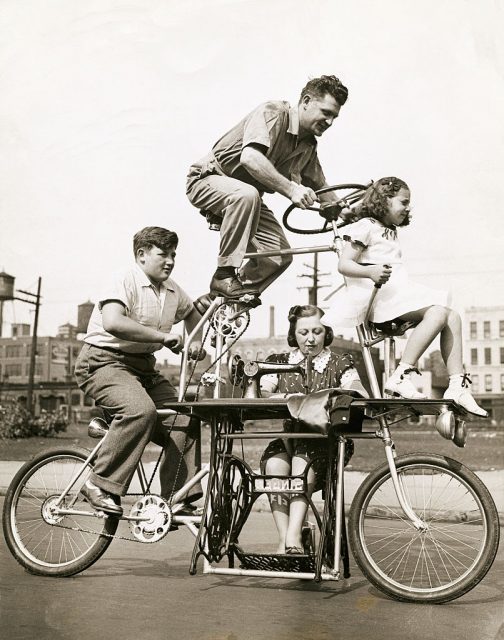
Pramobile
Having a baby shouldn’t slow you down any more than having a family of four. With that in mind, the pramobile was invented in the late 1920s or early 1930s, so that mother and baby could travel in style. The pramobile had a top speed of 15 miles per hour (although notably no sewing machine).
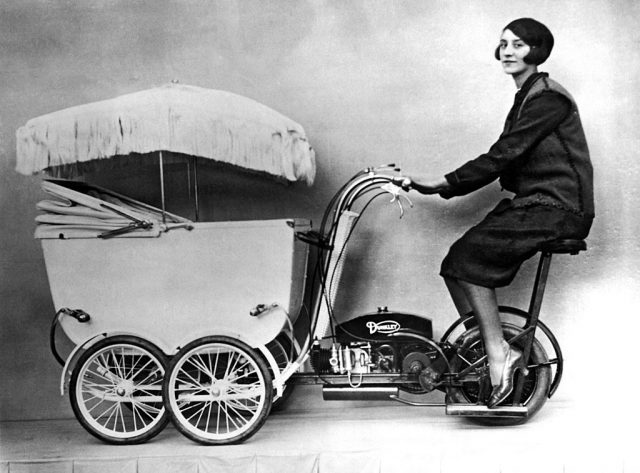
The idea hasn’t gone away and it’s still possible to get a variation of the pramobile today, as this video shows:
Monowheels and dynaspheres
If you like the idea of a unicycle but don’t enjoy heights, then perhaps you should look at investing in a monowheel. Like a unicycle, this vehicle has only one wheel, but instead of sitting on the top, you sit inside it.
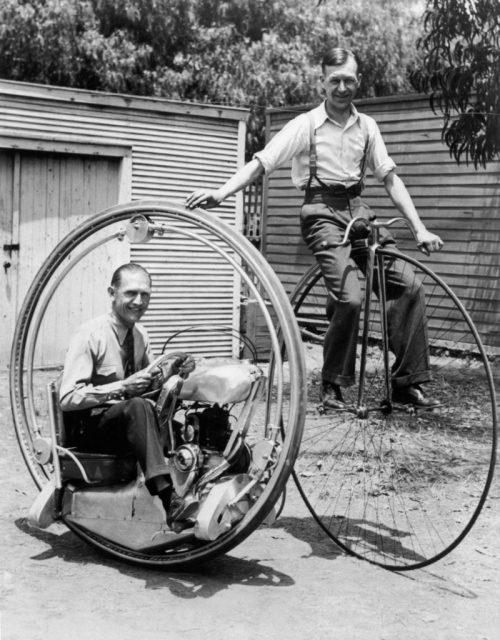
In the late 19th century, these vehicles were hand-cranked or pedal-powered, whereas today, they are more often motorized. To changed direction on a bicycle, you use the handlebars. But for a monowheel, steering was achieved by the rider shifting their weight from one side to another or using a gyroscope.
![(Photo Credit: Nationaal Archief – Enwielige motorfiets / One wheel motor cycle] Uploaded by kalatorul, No restrictions, accessed via Wikimedia Commons)](https://www.thevintagenews.com/wp-content/uploads/sites/65/2021/09/one-wheel-motorcycle-goventosa-640x504.jpg)
While today you mostly see monowheels used for entertainment purposes such as in parades, they were a genuine form of transport when they were first introduced.
The Dynasphere was a particular type of monowheel created in 1940 by Dr. J. A. Purves, based on a sketch by Leonardo da Vinci. It could reach a top speed of 25-30 miles per hour (40-48 kilometers per hour).
In 1932, the second prototype was taken to Brooklands racing circuit for a demonstration that was filmed by Pathé Newsreel.
Although it looks bizarre and cumbersome, some people were enthusiastic about future applications. An article in Meccano Magazine in 1935 stated that “it possesses so many advantages that we may eventually see gigantic wheels similar to that shown on our cover running along our highways in as large numbers as motor cars do today.”
Sadly, that doesn’t appear to be the case.
Water taxi
When it comes to cars, there have been many strange designs over the years, from the bubble car
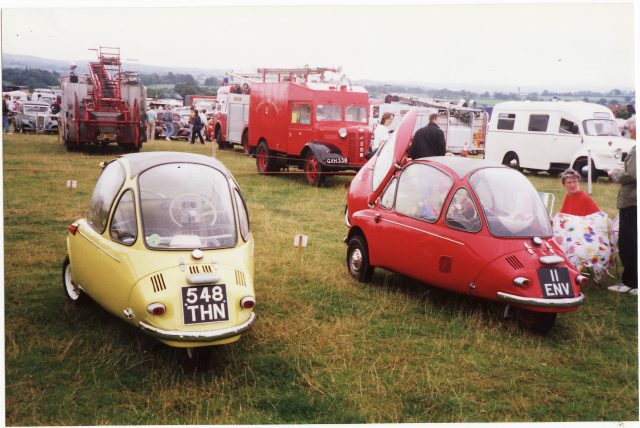
to this futuristic car from Autoworld Museum in Brussels.
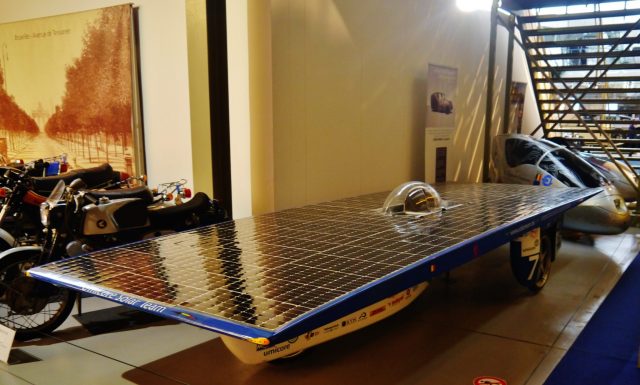
But what is perhaps equally bizarre is some of the uses to which cars have been put.
When you say the phrase “water taxi,” you probably imagine something like a Venetian gondola. But if you’re used to a bit more luxury, you might imagine this:
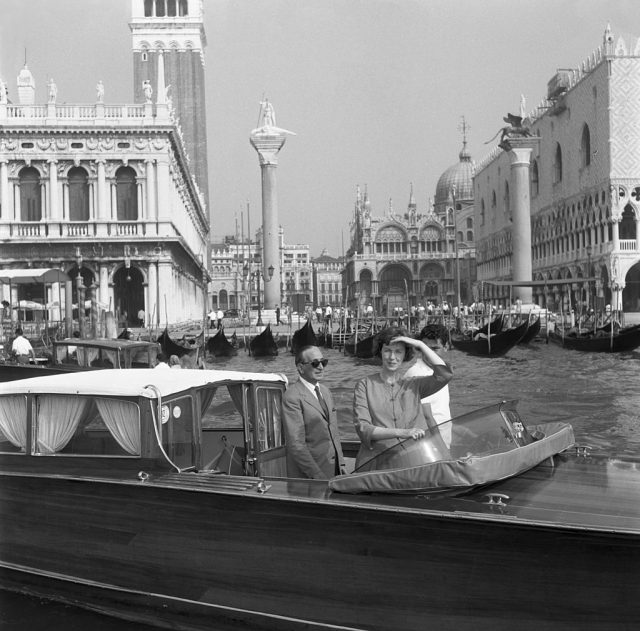
If you live near Tokyo, you might have been on this rather futuristic-looking water bus:
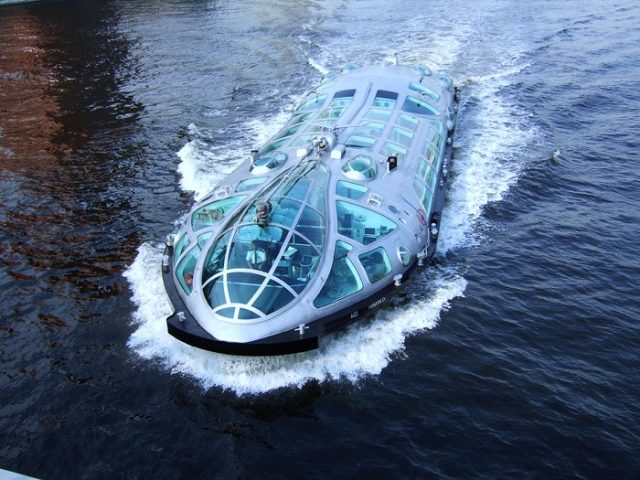
However, some people have taken the idea of a water taxi to a new level, such as this person in Massachusetts in the early 1900s.
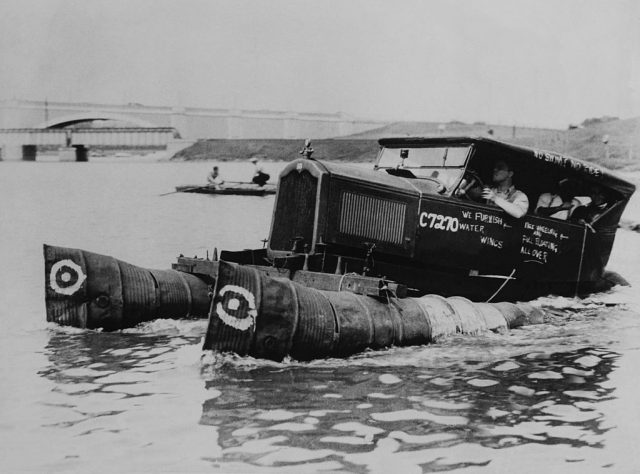
Then there’s Amédée Lichtevout and Vincent Leroy, who turned their Citroën 2CV into an amphibious vehicle in 2005. They used their modified car to tour the French river canals.
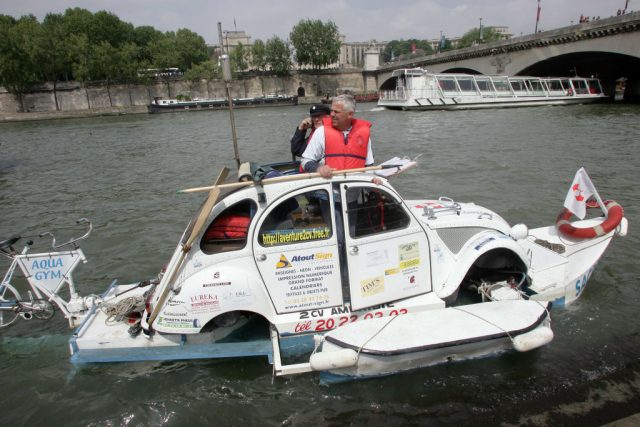
Illuminated tires
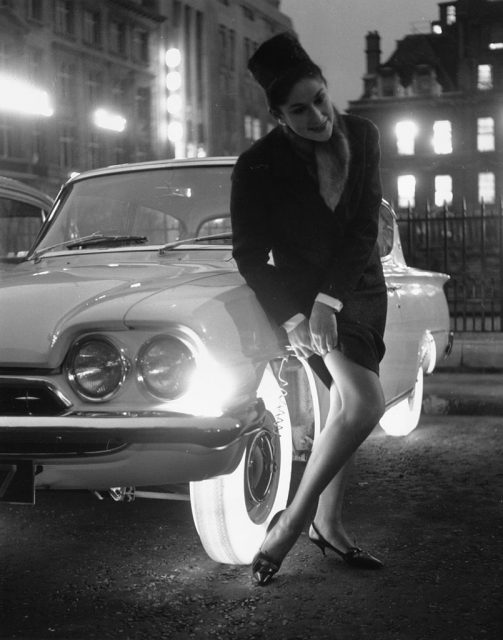
For those who aren’t bothered about where they’re going but just want to get there in style, the 1960s offered motorists a chance to do just that with these illuminated tires.
Made by The Goodyear Tire Company, the light came from bulbs mounted inside the wheel rim.
Vintage car coffee maker

If you’re looking for indulgence rather than bling, you could go for an in-car coffee maker. Why bother bringing a flask when you can brew your own fresh cup of coffee?
Of course, this is an invention that is still available today, but somehow the modern versions lack the style of this vintage one.
A pedestrian shovel and a unique anti-theft device
An added feature you might like to consider is this rubber bumper, also known as a “pedestrian shovel” and “pedestrian catcher.” Here is its inventor, Mr. A.J. Grafham demonstrating how a sponge rubber seat tips back when it collides with something, thus avoiding pedestrian injuries.
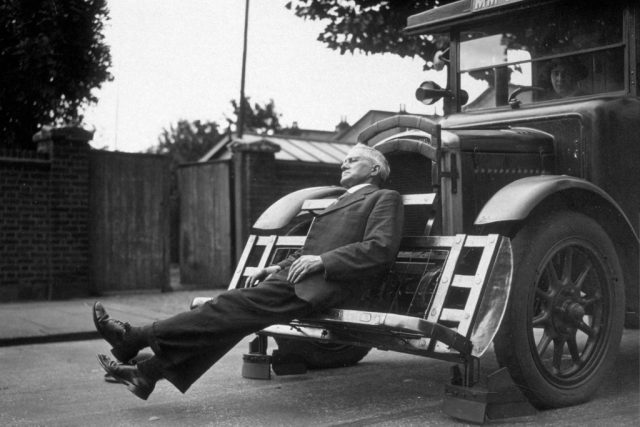
In 1939, two Sheffield engineers invented the “safety scoop,” which folded away for normal driving but could be activated by a lever in the event of a collision.
A motorist in 1983 came up with the idea of attaching a tire to the front bumper of his car. Any thief trying to steal this car would soon find himself overwhelmed by the smell of burning rubber and the squeal of a tire being jammed under the car.
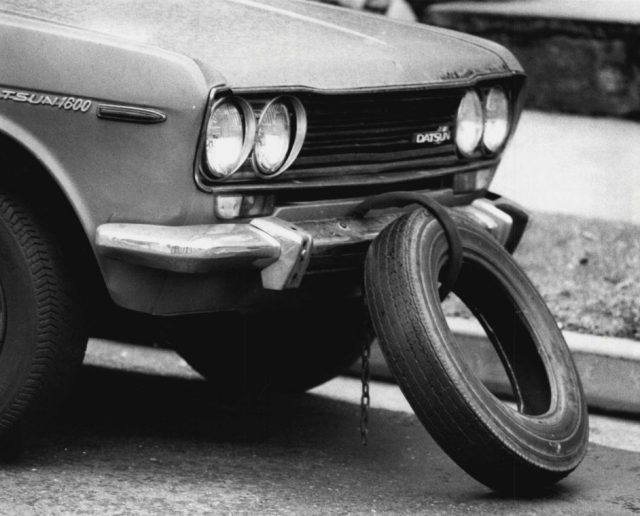
World’s largest 50-ton dump truck turned swimming pool
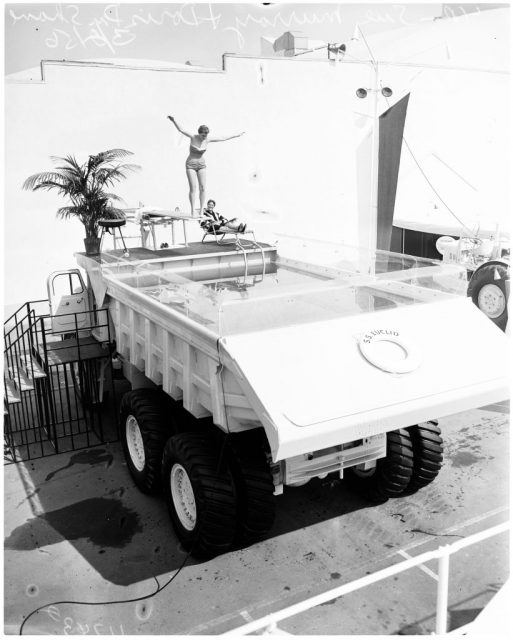
Taking luxury to the next level, this photo comes from 1956 and is entitled “Sue Murray and Doris Du Shane enjoy themselves at the world’s largest (50-ton) rear dump truck turn swimming pool.”
While this is perhaps the pinnacle of vehicle conversion, you wouldn’t want to be driving it and then have to do an emergency stop…
Folding bridge for emergencies
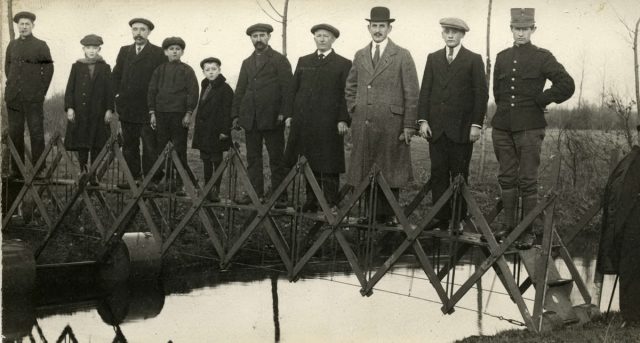
If you can’t afford a vehicle and tend to go about on foot, there’s still one invention that you can utilize.
More from us: Queens of the Road – Vintage Women on Bicycles
While bridges that fold up are common on waterways where tall ships might pass underneath them, someone in the Netherlands took the idea a step further. They created a folding bridge that could be transported in a handcart and used by pedestrians to cross a tricky bit of water.
